―
Special Delivery
Russia-Ukraine bombs
flew right to my kitchen table
―
[Agflation]
A phenomenon where prices rise across the board
due to a surge in agricultural product prices
"Agflation" = agriculture + inflation
The dread of agflation is sweeping across the globe.
Grain and food prices worldwide, which were already rising due to crop recession caused by climate change and increased transportation costs due to COVID-19, have taken an unprecedented steep upturn following the outbreak of the Russia-Ukraine war.

We face the most serious food crisis since World War II.
The Food and Agriculture Organization of the United Nations (FAO) announced that world food prices jumped to all-time highs in March due to the impact of the war. In particular, wheat prices are soaring. The black market price on the international market rose by 80% last year, and soared to 90% in March last month alone.
In March, David Beasley, Executive Director of the United Nations World Food Program (WFP), warned that the world would face "the most serious food crisis since World War II."
Wheat and corn price hikes and price volatility (Source: UN)
―
How did this crisis wind
up on my kitchen table?
―
Why does the war in Ukraine have such a huge impact on the dining tables of distant countries?
Ukraine is one of the world's three largest grain producers, owing to its chernozem― its fertile black soil rich in nutrients.
Russia is the world's largest wheat exporter. The two countries at war are responsible for 30% of the world's wheat supply, 20% of the corn, and 80% of our sunflower oil.
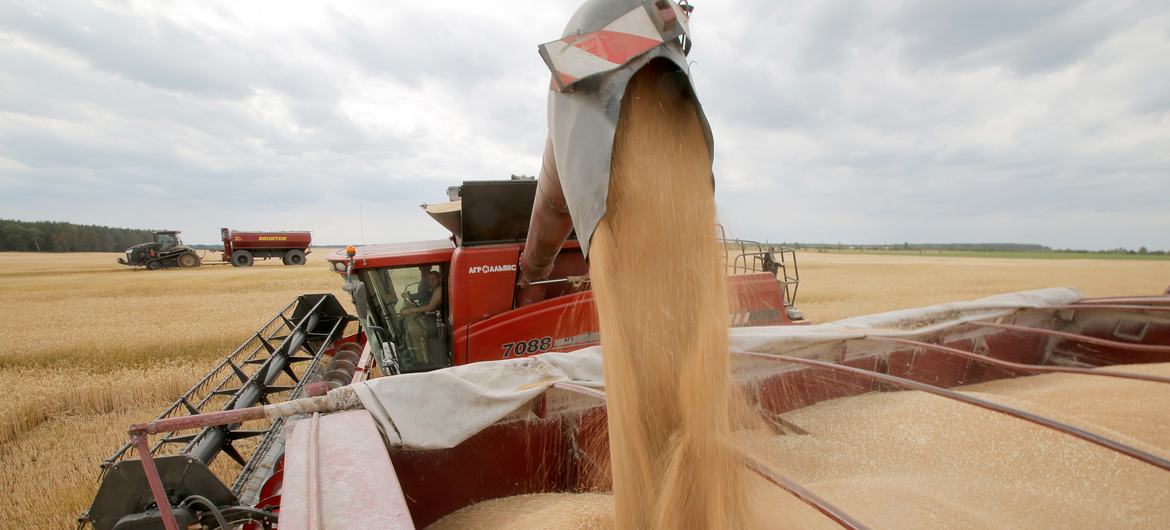
Scene of Ukrainian wheat harvest. (Source: FAO)
However, the war has left the black earth in southeastern Ukraine in ruins, and since farmers have fled or joined the war to defend their nation, spring sowing has been difficult and spotty. The Ukrainian Ministry of Agriculture forecasts that the area sown this spring will decrease from the regular 15 million hectares in 2021 to under 7 million hectares in 2022.
Moreover, Russia has blockaded the Black Sea inlets and harbors, through which 98% of Ukraine's grain passed for export.
Supply insecurity caused by a surge in food prices around the world
According to the Food and Agriculture Organization of the United Nations (FAO), the food price index recorded 159.3 in March, up 12.6% from the previous month (141.4). This is the biggest increase since 1996, and it jumped 33.6% in just one year. In particular, the grain price index composed of wheat, soybeans and corn rose 17.1% from February to 170.1 points.
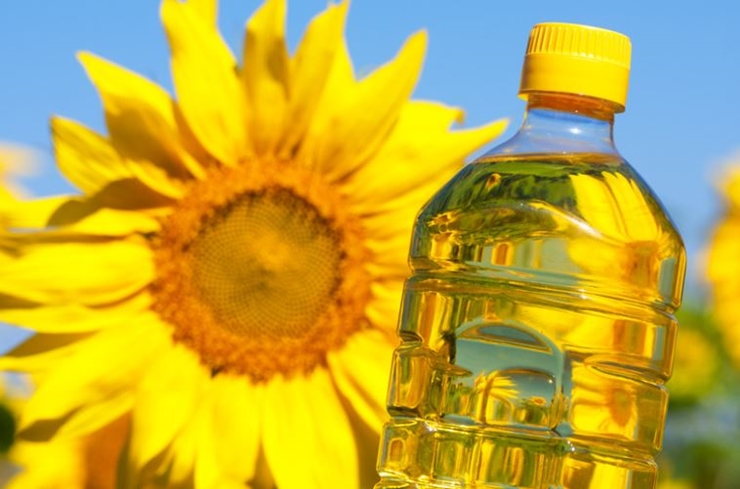
In the case of vegetable oils and fats, it recorded 248.6 points, up 23.2% from the previous month. As the world's largest exporter, the price of sunflower seed oil also rose sharply as Ukraine's exports declined in the aftermath of the war. As the supply of sunflower seed oil plummeted, the price of alternatives, palm oil, soybean oil and rapeseed oil rose.
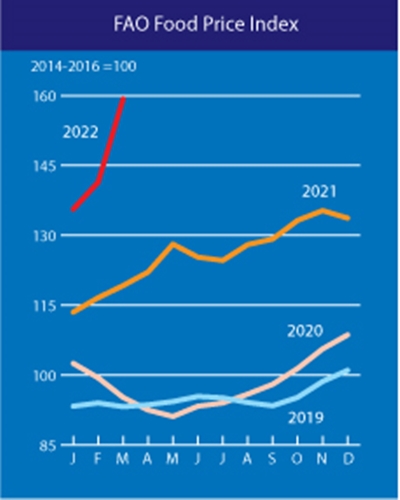
Food Price Index (Source: FAO)
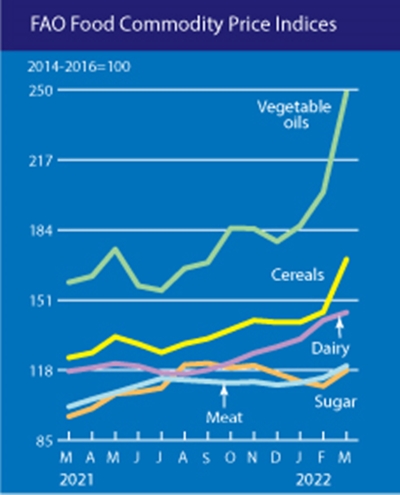
Price Index by Food Item (Source: FAO)
Visit "FAO Food Price Index"
https://www.fao.org/worldfoodsituation/en/
―
The Food Crisis Directly Hits
the Middle East and North Africa
―
Countries in the Middle East and North Africa, that are heavily dependent on Russia and the Ukraine for grain, are in a quandary.
More than half of the grain bought and sold in the Middle East originates in Russia and Ukraine. According to the Arab Reform Initiative (ARI), a specialized Arab think tank, Arab countries import 34.4% of their wheat imports from Russia and 15.9% from Ukraine.
The World Food Organization (WFP), which helps 125 million people around the world, buys half of its grain from Ukraine. The World Food Organization (WFP) said that the increase in grain prices due to the Russia-Ukraine war will have the greatest impact on countries of the Middle East and North Africa such as Yemen, Syria, Lebanon and Libya.
36 nations rely on Russia and Ukraine for over half their wheat imports. (Source: UN)
◇ Egypt sets a ceiling on bread prices
Soaring wheat prices have hit Egypt hard. Egypt is the world's largest wheat importer―its staple food is the wide, hollow bread called “baradi.”
Egypt applied to the International Monetary Fund (IMF) in March for a bailout as the result of a sharp rise in prices, including wheat, in the wake of the war. Egypt, which already suffered a food crisis in 2008, finally took special measures on April 21st to freeze bread prices.
Traditional Egyptian Bread Baradi (Source: AP)
◇ International Monetary Fund (IMF) to support Lebanon bailout
The situation in Lebanon is even worse. Lebanon suffered a painful blow when 85% of its total grain stockpile was lost in the destruction of grain warehouses from a huge blast in the port of Beirut in 2020.
Lebanon imports 80% of its wheat imports from Ukraine and Russia, and bread prices have risen by 70% compared to last year. At the same time, its currency value fell to one-tenth in two years. Finally, the IMF decided to fund a bailout for Lebanon from early April.
◇ Yemen's 8 million children face starvation
The famine situation is also critical in Yemen, 95% dependent on wheat imports, especially with 42% of its grain coming from Ukraine.
In Yemen, food prices have more than doubled over the past few years. Many families, struggling to make ends meet, are cutting back on or skipping meals altogether. The outlook of Yemen's food crisis is sure to be exacerbated by the war. Save the Children warns that Yemen's 8 million children face starvation.

Yemeni child suffering malnutrition (Source: Yonhap News)
―
The Domino Effect of Rising Natura
Gas, Fertilizer and Grain Prices
―
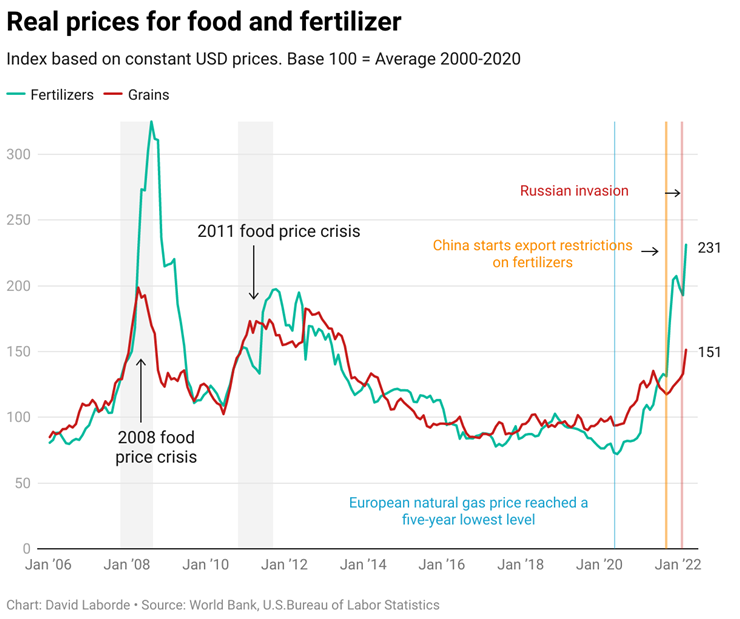
Actual Price Curve for Fertilizer and Grain
The current rise in global grain prices is reminiscent of dominoes falling one after another.
Fertilizer prices rose first. Russia is a prime exporter of natural gas―a key ingredient in making ammonia and urea, raw materials for fertilizer. Russia is also a major exporter of potassium carbonate, nitrogen, and phosphate, also vital ingredients of fertilizers (at proportions of 16%, 8% and 8%, respectively). However, the export of these raw materials has been blocked by Western sanctions.
Russia and Belarus (allies) account for 20% of fertilizer exports. (Source: UN)
According to International Food Policy Research Institute (IFPRI), nations relying heavily on fertilizer imported from Russia and Belarus must seek alternative sources elsewhere, but at the additional costs of longer distances and rerouting, fertilizer prices will rise significantly or become unavailable, and shortages are inevitable.
In addition, as three-fourths of the world's countries rely on imports for over half their fertilizers, the turmoil on the global market is expected to spread rapidly and affect nations not directly dependent on Russia or Belarus.
European fertilizer plants are now cut in half. If fertilizer shortages and price surges continue, grain prices are bound to rise further in the future. In the case of urea fertilizer, the price per ton is over $1,000, a nearly four-fold increase over the beginning of this year.
High fertilizer costs lead to higher grain prices. Farmers in Brazil, the largest soybean exporter, are cutting corn production as fertilizer prices rise. A similar impact on soybean cultivation is expected.
Maximo Torero, head researcher at UN Food and Agriculture Organization, said the fertilizer crisis is more worrisome.
Importance of Ukraine and Russia in World Agriculture (March 2022)
Visit World Food Organization Report
https://www.fao.org/3/cb9236en/cb9236en.pdf
Nations depending on fertilizer from Russia and Ukraine (Source: UN)
Not only grain prices―all food prices are rising together. According to the FAO Food Price Index for March, the sugar price index, rebounded 6.7% from its previous downward trend, and is now 20% higher than one year ago. The meat price index also rose 4.8% to a record high on the back of a surge in pork prices in Western Europe. The dairy price index was up 23.6% from March 2021.
―
No food exports! Countries close their
warehouses and strengthen food security
―
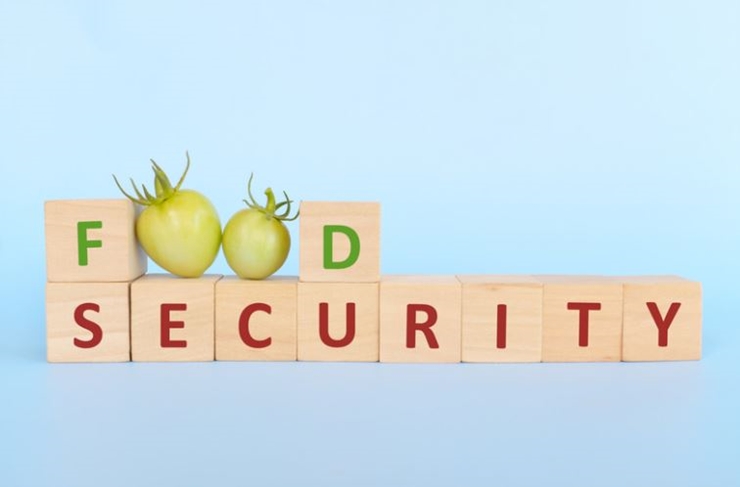
Countries are closing their warehouses and strengthening food security. Egypt, the Arab country with the largest population, has banned exports of wheat, flour, lentils and soybeans for three months amid growing concerns about a shortage of spare parts.
Palm oil is the main raw material of cooking oil; the world's edible oil prices wavered after news that Indonesia, the largest producer of palm oil, will restrict palm oil exports.
According to International Food Policy Research Institute (IFPRI), nations restricting food exports after the Ukraine war have increased from 3 to 16 as of April. Beside Russia and Ukraine, nations limiting exports include Indonesia (palm oil), Argentina (beef), Turkey, Kyrgyzstan, and Kazakhstan (grain).
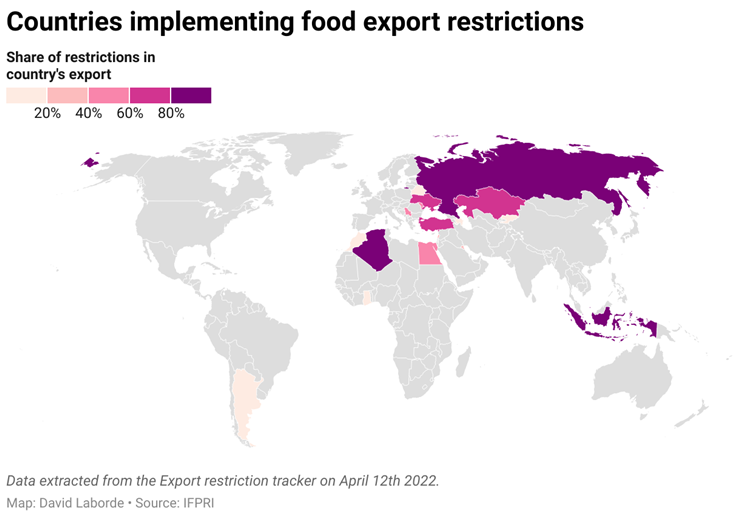
Nations restricting food exports. (Darker color shows more restrictions.)
Export restrictions and global food insecurity due to war (April 2022)
Visit the International Food Policy Research Institute report:
https://www.ifpri.org/blog/bad-worse-how-export-restrictions-exacerbate-global-food-security
Agriculture ministers of the G7 nations criticized food export restrictions on March 11. "We will take whatever measures necessary to respond to and prevent the food crisis."
―
Food crisis hits
the poor hardest
―
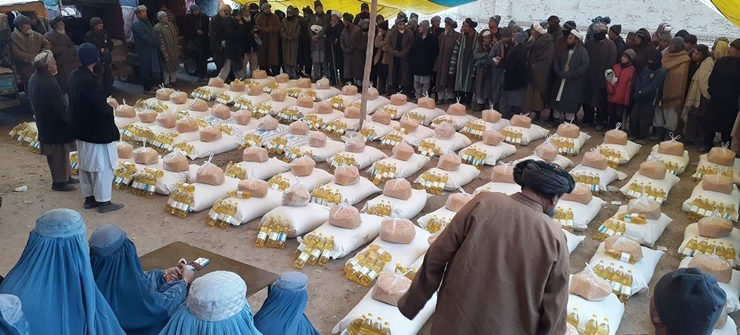
(Lining up for food and oil rations in Afghanistan: WFP photo)
International conflict is harsher on the poor. Lower income brackets spend proportionally more to meet food consumption needs. The World Bank estimates that for each 1 percentage point increase in food prices, 10 million people worldwide lapse into extreme poverty.
The World Food Organization publishes the quarterly "Crop Prospects and Food Situation" report assessing global crop production and food outlook in poor countries in order to preempt the food crisis.
In the March report, 44 countries worldwide stated they need external food aid. Among these, 33 African nations account for 75% of those in need of assistance. The list includes 9 countries in Asia and 2 nations in Latin America and the Caribbean.
Visit the “Crop Prospects and Food Situation” global report:
https://www.fao.org/documents/card/en/c/cb8893en/
WFO data published April 7 shows that 720 to 811 million worldwide suffer severe hunger, and 2.37 billion people did not get adequate nutrition―an increase of 320 million over the previous year 2021.
Country Assessment of 50 Nations Vulnerable to Impact of Food Security in 2022-'23 (April 7, 2022 WFO report:)
https://www.fao.org/3/cb9447en/cb9447en.pdf)
―
International Solidarity
for Resolving Food Security
―
◇ World Bank, IMF, WFP, WTO urge coordinated action on food security
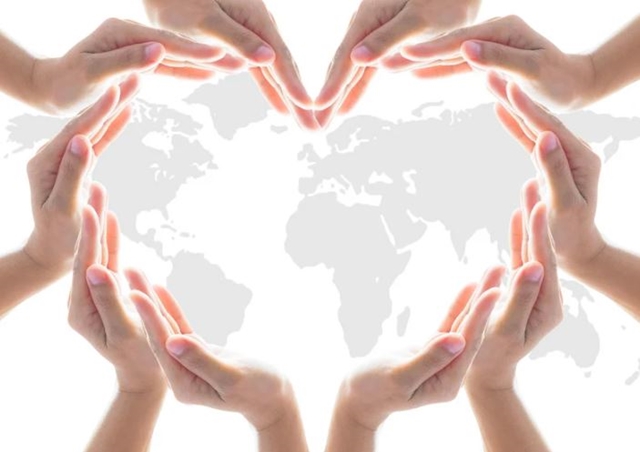
World Bank President David Malpass, International Monetary Fund (IMF) President Kristalina Georgieva, World Food Program (WFP) Director David Beasley, World Trade Organization (WTO) Director Ngozi Okonjo-Iweala issued a joint statement urging cooperation to help vulnerable nations cope with looming food security threat.
The heads of the four organizations stated, “It is imperative we provide prompt assistance to nations with food insecurity in a cooperative manner. We are ready to work with our multilateral and bilateral partners to help the countries resolve this urgent crisis.”
- Instant food supply
- Financial aid to households and countries
- Promote free trade without export restrictions on food & fertilizer
- Investment in sustainable food production and nutritional security
Visit the joint statement:
https://www.wto.org/english/news_e/news22_e/igo_13apr22_e.htm
◇ UN Food and Agriculture Organization (FAO) Policy Recommendations for Resolving Global Food Security
- Open up the world food and fertilizer trade
- Break free of dependence on Russia and Ukraine; seek new and diverse suppliers
- Support refugees and vulnerable groups in Ukraine
- Refrain from reacting to individual country-level policies (e.g. export restrictions)
- Reinforce transparency, ensure public access to information on global market conditions
◇ European Union (EU) Proposal of Emergency Assistance Program to Resolve Ukraine's Food Crisis
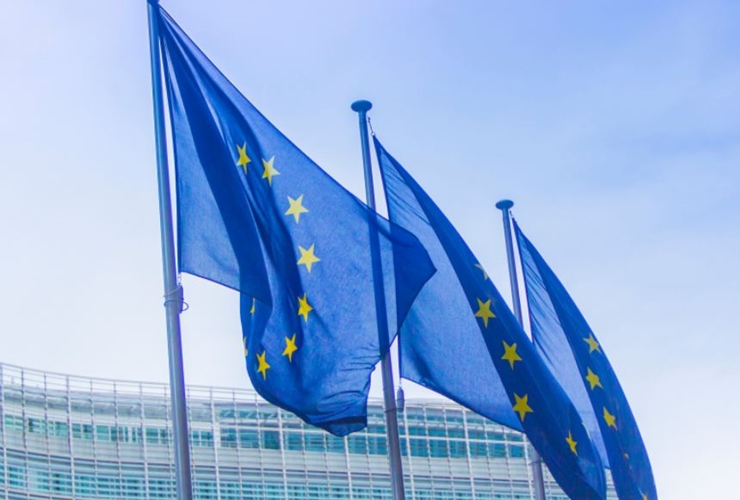
The European Union (EU) has also stepped in. On March 23rd the European Commission offered 330 million euros in emergency aid to Ukraine to alleviate their people’s suffering from the Russian invasion.
The European Commission issued the statement: “Now is the time for Europe to show its solidarity: to help Ukraine, its people and farmers, as well as vulnerable food-importing countries around the world that face surging prices and potential shortages. We are committed to taking all necessary steps to contribute to global food security, particularly in Ukraine, North Africa and the Middle East, as well as in Asia and sub-Saharan Africa.”
Visit European Union Emergency Assistance Program Proposal
https://ec.europa.eu/commission/presscorner/detail/en/ip_22_1963
◇ Policy recommendations from the UN Food and Agriculture Organization (FAO) for resolving global food security:
- Open up the world food and fertilizer trade
- Break free from dependence on Russia and Ukraine and seek new and diverse suppliers
- Support for refugees and vulnerable groups in Ukraine
- Refrain from responding to individual country-level policies such as export restrictions
- Reinforcement of transparency and information provision on global market conditions
The voices of international organizations responding to the global food crisis are unanimous: We must deal with it jointly.
Today's world is tightly connected. The impact of each country's actions on other countries is different from the past. The stronger the country in the field, the greater the impact, and the weaker countries are inevitably suffering heavy damage.
We are now in an era when prompt and international cooperation is needed more than ever.
Link for reference to previous issues addressing "agflation":
http://www.sunhakpeaceprize.org/en/news/issue.php?bgu=view&idx=430
Written by Sharon Choi
Director of Planning
Sunhak Peace Prize Secretariat

